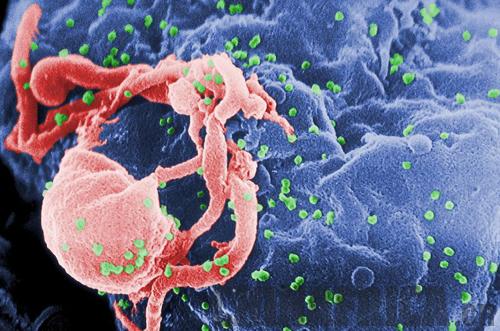|

Last December, the science journal Blood published a paper claiming a cure for HIV had been found. While the announcement breathes new life into the AIDS research community, it's not without caveats.
The paper's authors' evidence came in the form of a 44-year-old man referred to as "The Berlin Patient." An American living in Germany, the man, whose real name is Timothy Ray Brown, was diagnosed with HIV around age 30. He spent a decade following a traditional drug regimen for the disease with success; he was healthy and had a high T-cell count. Then, in 2006, Brown was diagnosed with acute leukemia. His doctor, Gero Hütter, decided to use the cancer as an opportunity to also rid Brown of his HIV.
The standard treatment for leukemia involves using chemotherapy to kill off a cancer patient's blood cells, followed by a stem cell transplant (from donor blood and bone marrow) that repopulates the body's immune system with healthy white blood cells. Hütter tweaked this process so that Brown's transplant consisted of cells outfitted with a gene mutation called CCR5delta32.
The mutation is rare, but people who have it are highly resistant to HIV infection. Their cells lack a working CCR5, which is what HIV latches onto most often in order to invade cells. If any of the virus remained in Brown's body post-chemotherapy, it would be unable to infect his new white blood cells. Hütter was lucky to find such a donor among Brown's 232 general tissue matches. The transplant was successful, but a year later Brown's cancer re-emerged.
During this time, Brown had been off antiretrovirals for his HIV, but his viral load was zero and T-cell count was still high. Zero HIV presence in the body without the help of drug cocktails was unheard of, according to the scientists involved. He underwent a second transplant to attack his leukemia, and a year later the results were the same: no HIV.
Nearly four years have passed, and Brown is the first person to be officially "cured" of AIDS, but the implications of his treatment don't reach very far. The gene mutation CCR5delta32 doesn't exist in African or Asian populations. Even if it did, Brown's treatment was extremely costly, financially and physically. Screening for CCR5delta32 matches is expensive, up to hundreds of thousands of dollars per patient.
But in terms of AIDS research initiatives, Brown's story is a beacon of hope for the scientific community. Currently there are researchers genetically engineering HIV patients' own cells to fight the virus. Those treated with modified cells have shown good results – the cells seem to survive and expand in the body over time. Artificially inducing a CCR5delta32 effect in the body is also being experimented with. These ventures may point to a future where HIV can be controlled without drugs.
Tech Bytes
➲ A joint report released by the International Finance Corp. (IFC) and the World Bank estimates that 120 million households in Africa could be living off-grid by 2015. The boom is expected to result in one of the world's largest markets for portable solar lighting. Predictions that demand for the lighting scheme will increase by 65 percent makes it comparable to the current spike in cellphone sales. The IFC and World Bank are currently developing solar lighting programs to address the oncoming needs of rural and impoverished areas across the continent.
➲ Rwanda has been ranked the best country in Sub-Saharan Africa for health science and technology initiatives, according to researchers at a Canadian global health organization. The researchers conducted studies in Uganda, Rwanda, Ghana, Kenya, South Africa, Madagascar, Nigeria and Tanzania to determine which was most effective and innovative in solving health problems. Rwanda was the only country with tangible political support for science and technology: it dedicates 1 percent of its GDP to the field.
➲ China's first domestically-made jet, ARJ21-700, spent January undergoing cold weather testing in the extremes of Inner Mongolia Autonomous Region. Daily temperatures there average 30 degrees Celsius below zero. The aircraft, having completed various flight trials since 2008, can fly up to altitudes of 11,900 meters and distances of 3,700 km. Its manufacturer is in the process of getting U.S. Federal Aviation Administration certification. |